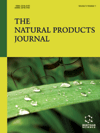
Full text loading...
We use cookies to track usage and preferences.I Understand
Metabolic dysfunction-associated fatty liver disease (MAFLD) is the most common chronic liver disease progressing towards a substantial global health concern. A multitude of therapeutic agents are being used to treat MAFLD. The high prevalence and adverse effects of drugs have increased the global popularity of herbal medicines (HMs) as effective therapeutic agents to treat MAFLD. Among the causes of pathogenesis, insulin resistance (IR) plays a crucial role in MAFLD. Hence, the amelioration of IR has emerged as a promising target for potential therapeutic approaches in MAFLD.
This study aimed to explore in vitro and in vivo mechanisms that unveil recent advances in HMs that target the amelioration of IR in MAFLD.
Electronic databases, including PubMed and MEDLINE, were used to search literature for HMs in the management or treatment of NAFLD published up to March, 2023. The three primary search terms were “MAFLD” “NAFLD” and “HM”. MeSH of NAFLD, such as (Non-alcoholic fatty liver disease, Non-alcoholic Steatohepatitis) and HM (Medicinal plants, Plant extracts), and keywords were used to optimize the search strategy.
HMs act on a multitude of molecular pathways that increase insulin sensitization including upregulation of the secretion and activation of insulin receptor substrate (IRS) proteins, upregulation of phosphatidylinositol 3-kinase (PI3K)/AKT (also known as PKB or protein kinase B) signaling pathway, activation of the 5' AMP-activated protein kinase (AMPK) pathway and modulation of enzymes of glucose homeostasis, regeneration of the pancreatic β-cell mass, modulation of secretion of adipokines, enhancement of the uptake of glucose into tissues via increased expression of GLUT in tissues, and upregulation of FGF1/FGF1R signaling pathway.
HMs possess a multitude of potential actions that reduce the IR and improve glucose homeostasis. Hence, HMs are a promising resource as effective medications for the treatment of MAFLD.

Article metrics loading...

Full text loading...
References


Data & Media loading...

